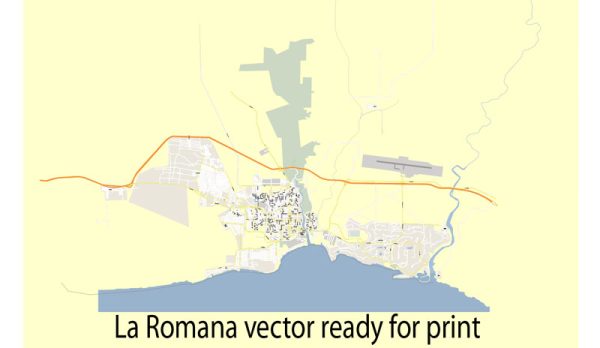La Romana is a province and a city in the Dominican Republic, situated on the southeastern coast of the country. The city has a rich history of urban development, marked by economic growth, industrialization, and tourism. Here’s a brief overview of the history of urban development in La Romana:
- Early History: La Romana’s history can be traced back to the early years of Spanish colonization in the Americas. The area was initially inhabited by the Taino people. With the arrival of the Spanish in the 16th century, the region became part of the Spanish colonial system.
- Sugar Industry: One of the significant factors that influenced the urban development of La Romana was the establishment of the sugar industry in the 20th century. Sugar production became a key economic driver, and large sugarcane plantations were developed in the surrounding areas. This led to the creation of infrastructure, including roads and railways, to facilitate the transportation of sugar cane.
- Central Romana Corporation: The modern development of La Romana can be closely tied to the establishment of the Central Romana Corporation in 1917. This corporation played a crucial role in the sugar industry and contributed significantly to the urbanization of the region. It developed housing for workers, schools, and other facilities, shaping the landscape of La Romana.
- Casa de Campo: The creation of the Casa de Campo resort in the 1970s by the Gulf+Western conglomerate further transformed La Romana. Casa de Campo is a large luxury resort that includes golf courses, a marina, and upscale accommodations. This development not only boosted tourism but also brought international attention to La Romana as a destination for the elite.
- Tourism and Infrastructure: In recent decades, La Romana has experienced growth in the tourism sector. Cruise ships regularly dock at the nearby port, bringing visitors to explore the city and its surroundings. This has led to the expansion and improvement of infrastructure, including hotels, restaurants, and entertainment facilities.
- Diversification of the Economy: While sugar production remains a significant economic factor, La Romana has diversified its economy over the years. Tourism, services, and other industries have become increasingly important, contributing to the city’s urban development and economic stability.
- Urban Planning and Modernization: The city has undergone urban planning initiatives to accommodate its growing population and to enhance the quality of life for residents. Modernization efforts have included the development of residential areas, commercial districts, and recreational spaces.
In summary, La Romana’s history of urban development is closely tied to its economic activities, particularly the sugar industry and later tourism. The city has evolved from a primarily agricultural and industrial center to a multifaceted destination, with a focus on tourism and diversified economic activities.


 Author: Kirill Shrayber, Ph.D.
Author: Kirill Shrayber, Ph.D.